Today’s Current Affairs: 12th Sep 2023 for UPSC IAS exams, State PSC exams, SSC CGL, State SSC, RRB, Railways, Banking Exam & IBPS, etc
Table of Contents
Phanigiri Artefacts:
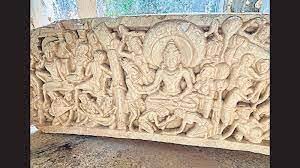
The Phanigiri artefacts, dating from 200 BCE-400 CE and discovered in 1942, are on display at the New York Metropolitan Museum of Art.
- The Phanigiri Buddhist site is considered one of the most important finds in Buddhist iconography in this millennium.
- Phanigiri is a small village in the state of Telangana.
Key findings:
- The thoranas discovered at Phanigiri are very important as they are among the first found south of Sanchi.
- The same thorana has a panel that shows both Mahayana and Hinayana schools of thought.
- There is evidence from Phanigiri that shows the deification of Buddha, and we can date this change. From a historical and spiritual identity, there is a transition to canonisation and ritual.
- The monograph of the event has the image of the Buddha wearing what looks like a Roman toga with folds carved in limestone.
Global Stocktake : Report
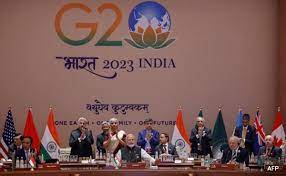
The synthesis report of the first Global Stocktake was released by the United Nations Framework Convention on Climate Change on the eve of the G20 leaders’ summit.
- Global Stocktake refers to a proposed five-year review of the impact of countries’ climate change actions.
- Under the Paris Agreement, every country must present a climate action plan in five-year cycles.
- The first global stocktake was scheduled for 2023 under the Paris Agreement.
- It will assess whether the net result of the climate actions being taken was consistent with the goal of keeping the increase in global average temperature from pre-industrial times to within 2 degrees Celsius.
Key highlights of the report:
- The global emissions are not in line with modelled global mitigation pathways consistent with the temperature goal of the Paris Agreement.
- There is a rapidly narrowing window to raise ambition and implement existing commitments in order to limit warming to 1.5°C.
- It is the most comprehensive assessment of global action on climate change to date, based on technical/scientific data and consultation with government experts, business leaders, and civil society in the past two years.
FAO Food Price Index : Report

The Food and Agriculture Organization’s (FAO) price index fell to a new two-year low in August.
- FAO Food Price Index is a measure of the monthly change in international prices of a basket of food commodities.
- It consists of the average of five commodity group price indices (cereal, vegetable, dairy, meat, and sugar), weighted with the average export shares.
- Base year: 2014-16
FAO:
- It is a specialised agency of the United Nations that leads international efforts to defeat hunger and improve nutrition and food security.
- Its goal is to achieve food security for all and make sure that people have regular access to enough high-quality food to lead active, healthy lives.
- Headquarter: Rome (Italy).
- Member countries: With 195 members – 194 countries and the European Union, FAO works in over 130 countries worldwide.
- The World Food Programme (WFP) and the International Fund for Agricultural Development (IFAD) are its sister bodies.
- Reports published by the FAO: The State of the World’s Forests (SOFO), The State of World Fisheries and Aquaculture (SOFIA), The State of Agricultural Commodity Markets (SOCO), The State of Food Security and Nutrition in the World (SOFI)
Interbank Call Money Market:
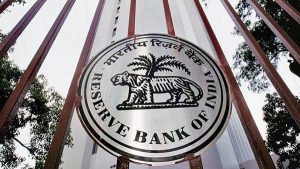
The RBI is likely to launch the pilot of central bank digital currency (CBDC) for transactions for interbank borrowing or call money market.
- Money Market basically refers to a section of the financial market where financial instruments with high liquidity and short-term maturities are traded.
- It includes buying and selling of securities of short-term maturities of one year or less, such as treasury bills and commercial papers.
- It is used by many participants, including companies, to raise funds.
- The money market is considered a safe place to invest due to the high liquidity of securities.
- Call Money is also referred to as the money at call.
- It is a short-term loan that is due to be paid immediately in full as and when demanded by the lender.
- Unliketerm loans, call money loan does not have a defined schedule of payment and maturity.
- Furthermore, the lender of the call money need not provide prior notice to the borrower about the repayment.
- Interbank Call Money Market is a short-term money market which allows large financial institutions to borrow and lend money at interbank rates, the rate of interest that banks charge when they borrow funds from each other.
- The loans in the call money market are very short, usually lasting no longer than a week.
- These loans are often used to help banks meet reserve requirements.
- It is not exclusively used by banks.
- Interbank call money market customers can include other financial institutions, mutual funds, large corporations, and insurance companies.
19th Heads Of Asian Coast Guard Agencies Meeting:
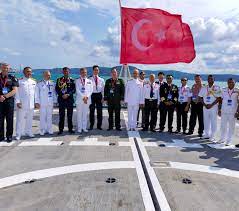
The Indian Coast Guard (ICG) recently took part in the 19th Heads of Asian Coast Guard Agencies Meeting (HACGAM) in Istanbul.
- The HACGAM is an annual event hosted by one of its member nations on a rotational basis.
- It was initiated by Japan to promote cooperation among regional coastguards.
- The forum has 23 member Coast Guard agencies and two associate members – the Regional Cooperation Agreement on Combating Piracy and Armed Robbery against Ships in Asia (ReCAAP) and the United Nations Office on Drugs and Crime (UNODC).
- It was launched after the capture of the pirated vessel MV Alondra Rainbow by the Indian Coast Guard in November 1999.
- The primary focus of the HACGAM is to foster cooperation between the coast guards of the member Asian states to ensure and promote safe, secure and clean seas in the region.
- To achieve this, HACGAM comprises four working groups that enable a focused and goal-oriented approach towards coordinated response and synergy towards common maritime issues.
- The Indian Coast Guard chairs the search and rescue (SAR) working group and is a proactive member of the other working groups, which include environmental protection, controlling unlawful acts at sea, and information sharing.
- In 2022, the 18th edition of the meeting was hosted by the ICG in New Delhi.
Goa Roadmap For Tourism : G20 Summit
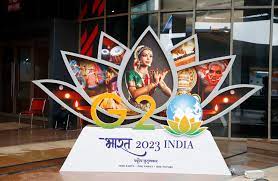
In a unanimous decision, G20 leaders recently endorsed the significance of the ‘Goa Roadmap for Tourism’ as a path towards achieving sustainable development goals (SDGs).
- The ‘Goa Roadmap’, an outcome of India’s G20 Tourism Track, is a blueprint for sustainable global tourism.
- It is aligned with the theme of India’s G20 Presidency and underscores the role of tourism in society, the economy, and environmental efforts.
- The roadmap focuses on five interconnected priorities. They are,
- green tourism;
- digitisation;
- destination management;
- skills development;
- support for tourism micro, small, and medium-sized enterprises (MSMEs);
- These priorities have been endorsed by all G20 countries, emphasising their commitment to achieving sustainable, resilient, and inclusive tourism.
- India’s vision of ‘Travel for LiFE’ (Lifestyle for Environment) has been incorporated into the Goa roadmap.
- Mission LiFE (Lifestyle for Environment )is an India-led global mass movement to nudge individual and community action to protect and preserve the environment.
- It was launched by the Indian Prime Minister at the 26th UN Climate Change Conference of the Parties (COP26) in Glasgow in November 2021.
- The program hopes to “mobilise one billion Indians as well as people in other countriesto become individuals who practice sustainable lifestyles.
- It makes the fight against climate change democratic, in which everyone can contribute with their respective capacities.
- It emboldens the spirit of the P3 model, e., Pro Planet People.
- It functions on the basic principles of ‘Lifestyle of the planet, for the planet, and by the planet’.
- It aims to following a strategy for changing people’s collective approach towards sustainability,
Grand Ethiopian Renaissance Dam:

Ethiopia recently announced that it has filled its Grand Ethiopian Renaissance Dam (GERD) on the Nile River.
- Grand Ethiopian Renaissance Dam (GERD) formerly known as the Millennium Dam, is situated in the Benishangul-Gumuz region of Ethiopia, near the border with Sudan.
- It is located on the Blue Nile, one of the main tributaries of the Nile River.
- At 6.45 Gigawatts, the dam will be the largest hydroelectric power plant in Africa when completed.
- It is a roller-compacted concrete (RCC) gravity-type dam comprising two power stations, three spillways, and a saddle dam.
- The main dam is 145m high and 1,780m long.
- It will create a reservoir covering 1,875 square kilometres and contain 74 billion cubic metres of water.
- Egypt and Sudan fear the massive $4.2bn GERD will severely reduce the share of Nile water they receive and have repeatedly asked Ethiopia to stop filling it until they have all reached an agreement on how it should work.
18th G20 Summit : Highlights
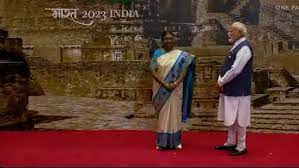
The 18th G20 Summit was held in New Delhi, India on September 9th and 10th, 2023. The summit was the first time India hosted the G20 Leaders’ Summit.
Theme : The theme of the summit was “Vasudhaiva Kutumbakam”, which means “The world is one family”.
Key Highlights of G20 Summit 2023:
- Admittance of the African Union (G20 now G21).
- Global Biofuels Alliance (GBA).
- Formation and Founding Members: The alliance was launched with nine initiating members: India, the US, Brazil, Argentina, Bangladesh, Italy, Mauritius, South Africa, and the United Arab Emirates.
- GBA Members constitute major producers and consumers of biofuels.
- USA (52%), Brazil (30%) and India (3%), contribute about 85% share in production and about 81% in consumption of ethanol.
- India – Middle East – Europe Economic Corridor (IMEC) :A Memorandum of Understanding (MoU) was signed between the Governments of India, the US, Saudi Arabia, the European Union, the UAE, France, Germany and Italy to establish the IMEC.
- IMEC is part of a broader initiative called the Partnership for Global Infrastructure Investment (PGII).
- G20 Global Partnership for Financial Inclusion Document: The G20 Global Partnership for Financial Inclusion document prepared by the World Bank has lauded the transformative impact of India’s Digital Public Infrastructure(DPI) over the past decade under the Central Government.
- Rapid Financial Inclusion: India’s DPI approach achieved 47 years’ worth of financial inclusion progress in just 6 years.
- Jan Dhan-Aadhar-Mobile (JAM) Trinity boosted the financial inclusion rate from 25% in 2008 to over 80% within 6 years.
- Government to Person (G2P) Payments: India’s digital G2P architecture facilitated USD 361 billion transfers to beneficiaries from 53 ministries via 312 schemes.
- Unified Payments Interface (UPI) Dominance: May 2023 witnessed over 9.41 billion UPI transactions, valued at Rs 14.89 trillion.
- Private Sector Efficiency: DPI streamlined private organizations’ operations, reducing complexity, costs, and time.
- Lower Compliance Costs for KYC: Reduced compliance costs from USD 0.12 to USD 0.06, making lower-income clients more attractive.
- Cross-Border Payments: UPI-PayNow linkage enables faster and cheaper cross-border payments with Singapore.
- Account Aggregator Framework: Enabled 1.13 billion accounts for data sharing with 13.46 million consents raised.
- Data Empowerment and Protection Architecture (DEPA): Provides individuals control over their data, fostering innovation and competition.
- Tripling the Global Renewable Energy Capacity By 2030: G20 countries promised to work towards tripling the global renewable energy capacity by 2030.
- Commitment to Global Food Security and Nutrition
E-Waste Management In India:

The Indian Cellular and Electronics Association (ICEA) released a report on ‘Pathways to Circular Economy in Indian Electronics Sector’ in collaboration with NITI Aayog, aiming to explore opportunities for managing electronic waste (e-waste) more effectively.
- E-waste refers to all items of electronic and electrical equipment (EEE) and its parts that have been discarded by their owner as waste without the intent of re-use.
- India is the third-largest e-waste generator in the world after China and the USA (Global E-waste Monitor 2020).
- E-waste management in India is predominantly informal, with roughly 90% of collection and 70% of recycling handled by the informal sector.
- The level of e-waste is expected to grow due to cheaper phones and increased usage.
- In November 2022, the Ministry of Environment and Forests notified the E-Waste (Management) Rules, 2022, (which came into force on April 1, 2023) to digitize the e-waste management process and provide more transparency in handling e-waste.
Provisions of the E-Waste (Management) Rules 2022:
- Restricted the use of hazardous substances (such as lead, mercury, and cadmium) in manufacturing electrical and electronic equipment that have an adverse impact on human health and the environment.
- Increased coverage: It has increased the range of electronic goods covered e.g., laptops, mobile, cameras etc.
- Producers of electronic goods have to ensure at least 60% of their electronic waste is collected and recycled by 2023 with targets to increase them to 70% and 80% in 2024 and 2025, respectively.
- Companies will report these on an online portal.
- Extended Producer Responsibility Certificates (similar to carbon credit mechanism): This will allow the offsetting of e-waste responsibility to a third party.
- ‘Environmental compensation’ to be provided by the companies that don’t meet their target.
- Role of State Governments: They will earmark industrial space for e-waste dismantling and recycling facilities, undertaking industrial skill development and establishing measures for protecting the health and safety of workers engaged in the dismantling and recycling facilities for e-waste.
- A component made by different manufacturers be compatible with each other
- The Central Pollution Control Board shall conduct random sampling of electrical and electronic equipment placed on the market to monitor and verify the compliance of reduction of hazardous substances provisions.
Mandatory Hallmarking : Third Phase

The third phase of mandatory hallmarking in India, starting from September 8, 2023, will include an additional 55 districts, bringing the total number of districts covered under this system to 343.
- Hallmarking is like a quality stamp for jewellery and precious metal items. It tells you how pure or good the metal is.
- The principal objectives of the Hallmarking Scheme are to protect the public against adulteration and to obligate manufacturers to maintain legal standards of fineness.
- At present two precious metals namely gold and silver have been brought under the purview of Hallmarking.
- Mandatory hallmarking order is applicable on 14, 18 and 22 carats of gold jewellery/artefacts only.
- BIS assigns a unique HUID (Hallmarking Unique ID) number to all hallmarked items
- Consumers can verify the authenticity of hallmarked items using the ‘verify HUID’ feature in the BIS Care app.
- Under the Hallmarking scheme of the Bureau of Indian Standards(BIS), Jewellers are registered for selling hallmarked jewellery and recognised testing and hallmarking centres.
- Mandatory Hallmarking of Gold Jewellery has come into force from June 2021.
- In the first phase, mandatory hallmarking was implemented in 256 districts of the country with effect from 23 June 2021 and in the second phase additional 32 districts were covered.
White Sambar Deer : Discovery

Researchers have made a rare discovery of a “white” sambar deer with a condition called leucism, resulting in white or pale skin, in the Cauvery Wildlife Sanctuary in Karnataka, India.
- Leucism is a genetic condition that affects the pigmentation of an animal’s skin, feathers, scales, or fur.
- Unlike albinism, which causes a complete absence of pigment, leucism results in a partial loss of pigment, leading to white or pale colouration in affected areas.
Cauvery Wildlife Sanctuary:
- This sanctuary spans three districts and serves as a crucial connection between Bannerghatta National Park in the north and Biligiri Rangaswamy Temple Tiger Reserve and Male Mahadeshwara Hills Wildlife Sanctuary in the south.
Nuclear-Armed Submarine:
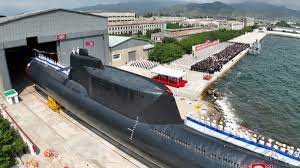
North Korea has introduced its first operational “tactical nuclear attack submarine,” known as Submarine No. 841, which has been assigned to patrol the waters between the Korean peninsula and Japan.
- This submarine, named Hero Kim Kun Ok, is deemed a key component of North Korea’s naval force and is likely a modified version of a Soviet-era Romeo-class submarine acquired from China in the 1970s.
- It is equipped with 10 launch tube hatches, suggesting it may carry ballistic missiles and cruise missiles.
- TNWs typically refer to short-range weapons that have not been classified as “strategic” under the Strategic Arms Reduction Treaty (START).
Varuna-23 : Bilateral Naval Exercise
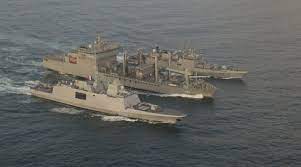
The 21st edition of the India-France bilateral naval exercise ‘Varuna-23’ took place in the Arabian Sea. This exercise involved guided missile frigates, a tanker, Maritime Patrol Aircraft, and helicopters from both the Indian and French Navies.
- His exercise has a long history, dating back to 1993, and has evolved into a symbol of the strong India-France strategic relationship, providing a platform for learning and cooperation in maritime security.
- Other defence Exercises between India and France:
- Varuna – Naval exercise
- Desert Knight-21and Garuda (Air exercise)
- Shakti – Army exercise
HII-A Rocket : Japan
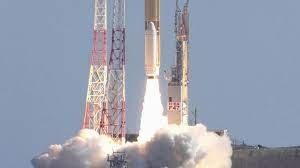
Japan launched the HII-A rocket recently.
- HII-A rocket launching site: Tanegashima Space Center in southwestern Japan.
- Launched by: Japan Aerospace Exploration Agency (JAXA).
- Objective: to explore the origins of the universe.
- The rocket put a satellite called X-Ray Imaging and Spectroscopy Mission, or XRISM, into orbit around Earth.
- It will measure the speed and makeup of what lies between galaxies.
- This information will help in studying how celestial objects were formed.
- It can also lead to solving the mystery of how the universe was created.
- The mission is significant for delivering insight into the properties of hot plasma.
- Understanding the distribution of this hot plasma in space and time, as well as its dynamical motion, will shed light on diverse phenomena such as black holes, the evolution of chemical elements in the universe, and the formation of galactic clusters.
- The rocket also has the Smart Lander for Investigating Moon, or SLIM which is a lightweight lunar lander.
Fintech Self-Regulatory Organizations : RBI

The Reserve Bank of India (RBI) Governor recently urged fintech entities to establish Self-Regulatory Organizations (SROs) in the rapidly evolving fintech sector.
Fintech Self-Regulatory Organizations (SROs):
- Financial technology or Fintech refers to innovative technologies designed to enhance and automate the delivery of financial services.
- Fintech encompasses technological advancements across various financial sectors, including retail banking, investments, and decentralized cryptocurrencies like DeFi, with a focus on improving financial literacy and education.
- An SRO is a non-governmental entity responsible for creating and enforcing industry-specific rules and standards.
- SROs prioritize safeguarding consumer interests, promoting ethical conduct, ensuring equality, and nurturing professionalism.
- They collaborate with industry stakeholders to formulate and administer regulations.




